Nasturtium is one of the most commonly used edible flowers in cooking. It is appreciated both for its decorative role on the plate, bringing beautiful colour to dishes, and for its peppery flavour. But did you know its leaves are also delicious and its buds can be prepared like capers?
Discover the countless ways (or almost!) to bring nasturtium from the garden or vegetable garden to the table…
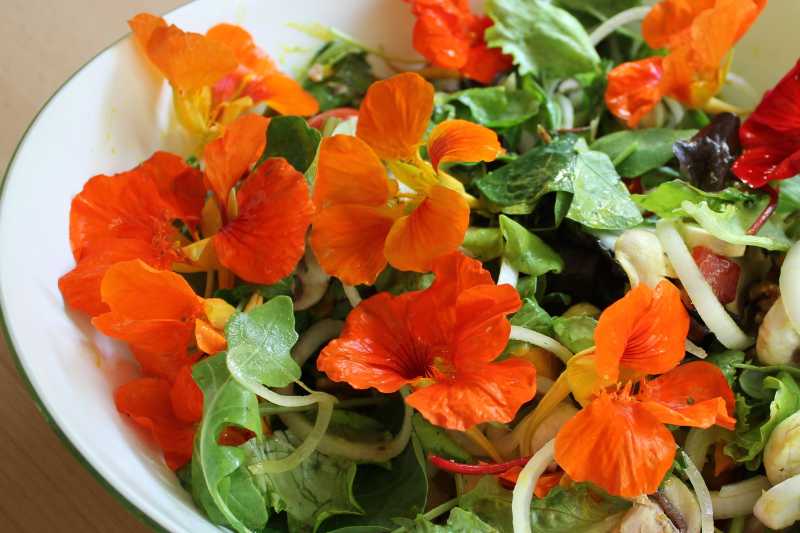
The Indian cress in brief
We all know the nasturtium, Tropaeolum majus by its botanical name: it is an annual creeping or climbing plant that is sown in spring in the vegetable garden, since it is one of those very interesting companion plants, a true magnet for aphids, and also a host plant for the cabbage white and brassicas. It is wonderful in window boxes, on window sills or balconies, where it cascades generously, adding a nostalgic charm. You can also use it as a very effective deciduous groundcover.
Flowers, from yellow to orange or even red, recognisable by their spur, bloom for much of the summer into early autumn. It prefers full sun.
The foliage is another attraction: rounded (described as peltate in botany), with undulate margins, green to glaucous.
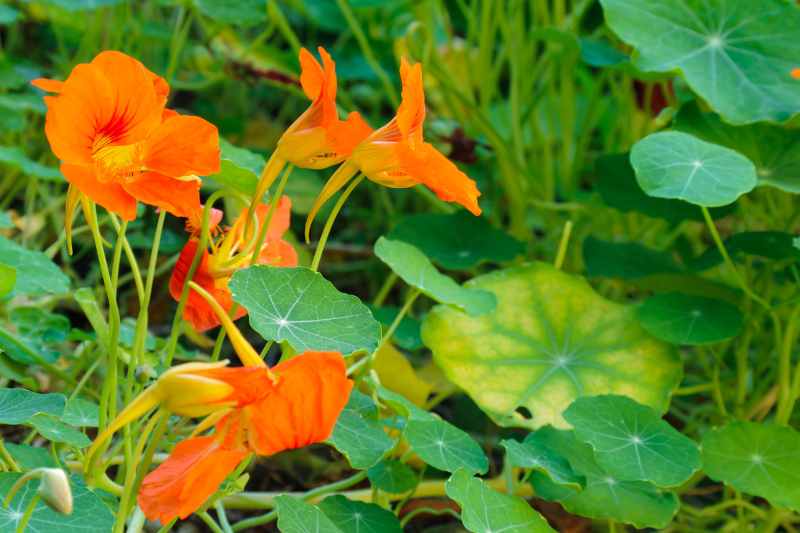
Which nasturtium to choose for cooking?
Opt for a nasturtium grown at home from seed — it is one of the easiest sowings to succeed. The typical Tropaeolum majus is perfect, but also try variegated or spotted varieties such as 'Baby Orange'. The tuberous nasturtium, more tender, can also be eaten — in that case it is the roots that are used.
How to use nasturtium?: tips, harvest and storage
As with all flowers used in cooking, pick flowers at full bloom and as needed, at most three hours beforehand. Store them in a cool place (avoid refrigerating them, which would alter their flavour). Choose flowers free of blemishes, as perfect as possible, and young leaves to retain plenty of crispness.
If necessary, very gently rinse flowers, leaves or buds before use to remove any soil residue.
All edible parts have a slightly peppery taste. So reduce pepper when seasoning your dish. Add flowers at the very end, after vinaigrette or sauce, which would damage them.
Flowers
Petals are delicately placed on a starter, often a salad or a carpaccio, but also on a main dish, as one would do with herbs. Chop nasturtium flowers, for example, over Thai rice or a meat dish, or leave them whole for presentation on a plate of crudités or a salad. They create a superb decorative effect, add an extra touch and an original aromatic note, and even accompany desserts.
Nasturtium is a perfect match for dishes with orange vegetables or as a green complement:
It is the flower for no‑cook cuisine enthusiasts, as in flower salads or to further liven up a ceviche of spiced fish.
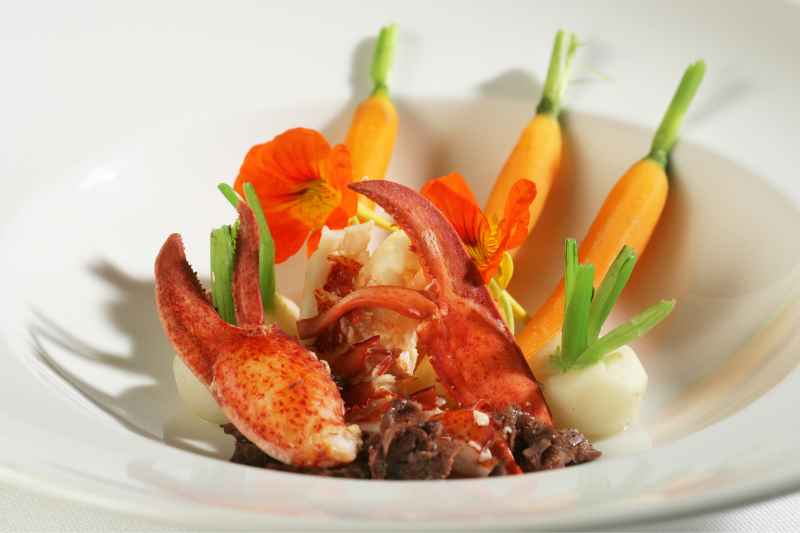
Leaves
Nasturtium leaves also have a slightly peppery flavour. They can be eaten raw or cooked.
Raw, they can be easily incorporated — blended, for example, into a whipped cream to accompany seafood or shellfish, or added to salads with a few flowers.
Cooked, they can be used in omelettes, as one would with sorrel leaves. They also make delicious green soups, balanced with radish tops for harmonious flavours.
Flower buds
Pickled in vinegar, the still-green seeds or the closed nasturtium buds can be transformed into caper substitutes. Harvest buds in spring (for buds) or late summer (for seeds), then, once dried, marinate them in brine or a vinegar mixture.
Some recipe ideas with nasturtium
Raw
- Rocket, tomato and nasturtium salad with olives and mozzarella, a drizzle of olive oil and a dash of white balsamic vinegar… job done! Vary colours with the full summer tomato palette: Green Zebra, Ananas, Black Beauty, etc.
- Indulgent salad combining duck breast or chicken strips, fresh goat's cheese and melon, a summer delight.
- Floral and aromatic salad, where you can pick freely from your herb garden — for example chives, chervil, coriander — combined with mesclun and nasturtium and borage flowers. Find the recipe for the nasturtium and borage flower salad.
- Discover Ingrid's caper substitute in the tutorial How to make nasturtium capers?
Cooked
Cooked, try a nasturtium petal jelly, as you would a rose petal jelly, to surprise your palate at breakfast. You can also try turning nasturtium petals into crystallised flowers, dried at very low temperature.
But it is above all the leaves that hold up better to cooking, such as in soups or in a creamy velouté of nasturtium flowers and leaves. Be careful — the leaves are very peppery, slightly piquant, so use sparingly in cooking.
Even more original, the roots of tuberous nasturtium can also be cooked: here is one way to prepare them: roasted tuberous nasturtiums with pumpkin and sunflower seeds.
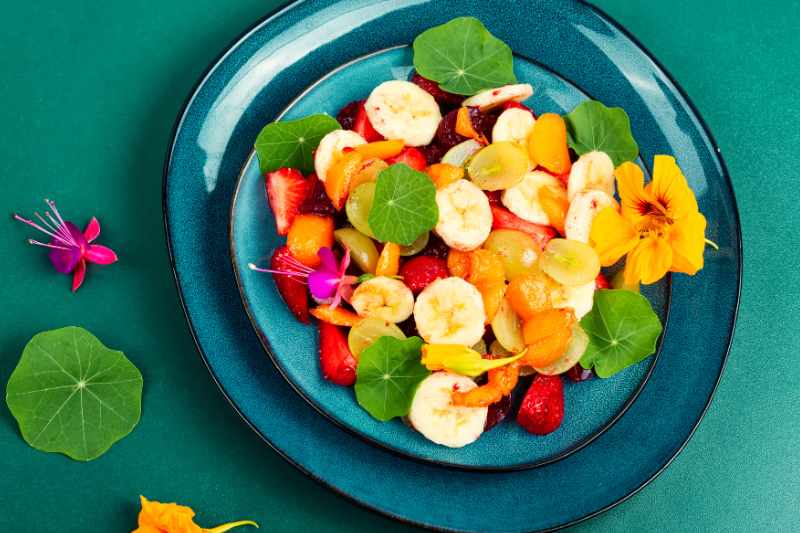
Learn more
Find everything you need to know about nasturtium in our complete guide: Nasturtium: planting, sowing, maintaining.
Discover other edible flowers in 18 edible flowers, how to make courgette flower fritters, Edible flowers: pansies in the kitchen!, How to use Tulbaghia in cooking? ?, and how to make elderflower fritters?
Edible leaves are also trendy in cooking. Read our articles on the subject: leaves that can be cooked, Celosia — and what if we ate it?, orache in the kitchen: plant-based recipes for rediscovering an ancient vegetable, how to preserve wild garlic...































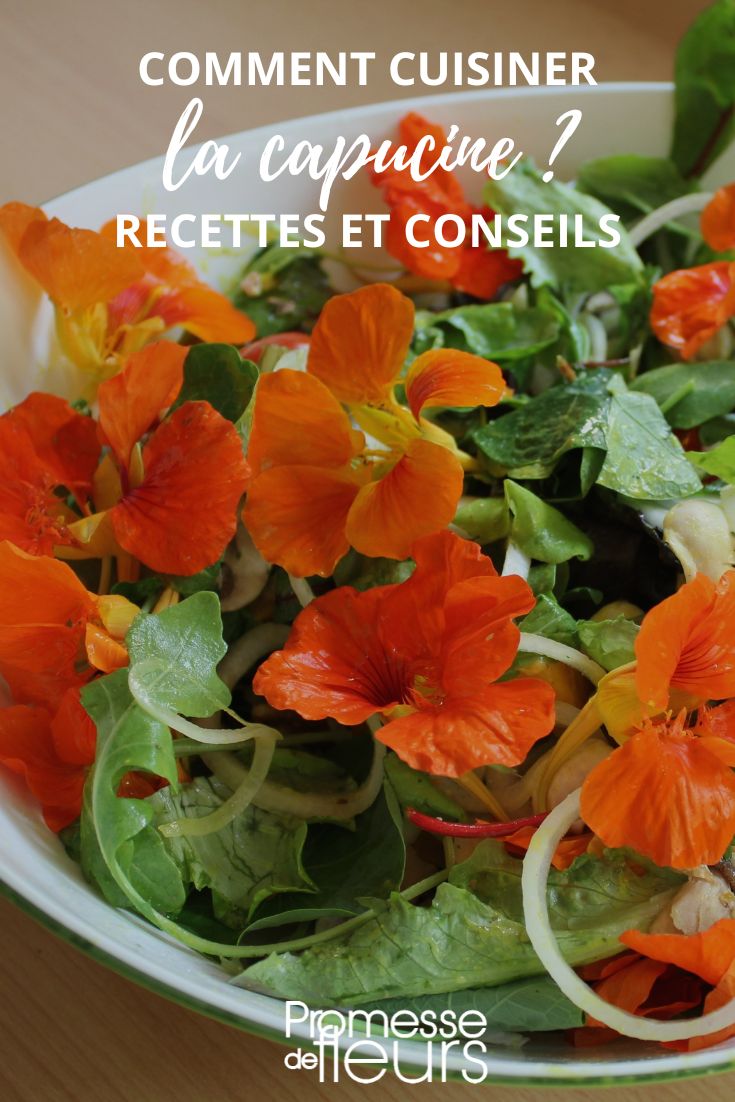
Comments